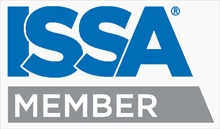How to Care for Rubber Flooring
Rubber flooring has been receiving more attention recently as an effective sustainable flooring option in many facilities such as schools, gyms, institutions, and more. Rubber flooring has numerous benefits, from sustainability to performance.
Rubber flooring has very good durability and can hold up in many situations, such as heat, humidity, and wet conditions, making it a great option for facilities such as gyms and pool areas. Rubber is also more slip-resistant, which makes it a more safety-oriented option in facilities like schools.
Rubber is a sustainable alternative to some other resilient flooring materials. Rubber is manufactured in two different ways: it can be made from natural rubber from rubber trees, or it can be made from recycled sources such as old tires and other rubber products. These manufacturing practices help make rubber flooring an environmentally friendly flooring option. Rubber also tends to have lower VOC emissions than other flooring types, improving indoor air quality and giving it an advantage especially in schools and institutions.The life cycle of a rubber floor is typically about 30 years, which also adds long-term value and reduces overall maintenance costs. In addition to all of this, rubber flooring can be customized in many designs and colors, making them suitable for almost any facility.
While rubber flooring is becoming more popular, it can still be a mystery as to how to properly care for this type of flooring. There are a few things to consider when it comes to the care of rubber floors.
First of all, dust mopping is not recommended and will most likely not be effective on rubber flooring, for two reasons. Since rubber is more slip-resistant, the action of pushing a dust mop across a rubber floor will not provide enough force to properly move soils across the surface of the floor, meaning that a lot of soil will get left on the surface. Also, many rubber floors are studded to enhance slip resistance, and dirt and moisture can tend to build up around these studs. Dust mops will not be able to effectively collect the soils around these studs. A vacuum cleaner – a HEPA vaccum is recommended – is a much more effective tool to collect all the soil on the floor and around the studs. A vacuum can also improve indoor air quality by preventing the soils from entering the air.
To clean rubber flooring, daily mopping with a neutral cleaner is recommended, although a disinfectant can also be used in areas where there are concerns about bacteria such as pools, locker rooms, and healthcare facilities. For more restorative cleaning, a dual-surface extractor – suitable for both carpet and rubber flooring – is very effective at dislodging soils which can then be vacuumed up.
Rubber flooring is a durable, sustainable flooring option that is becoming more popular in many facilities, and is actually quite easy to maintain if done properly.
For more information on floor care products and procedures, visit Multi-Clean’s Floor Care webpage.


